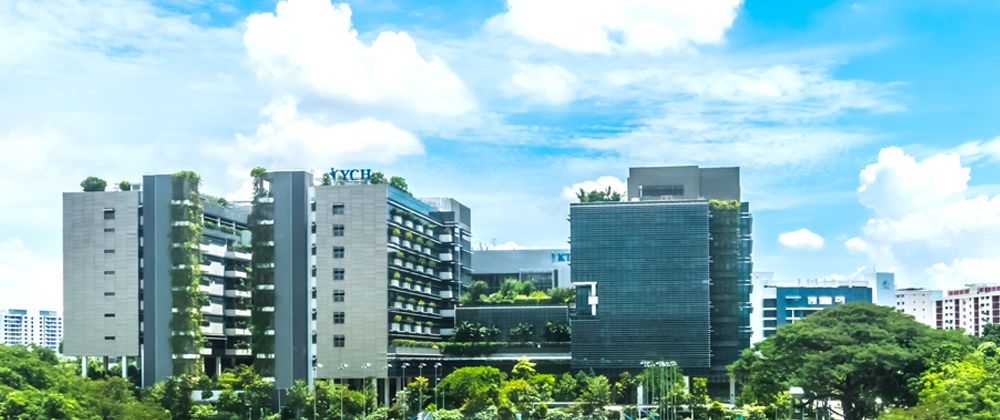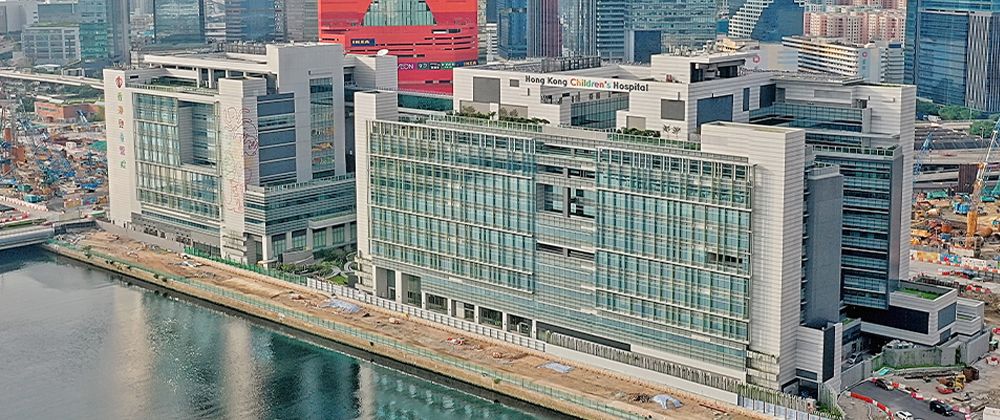Climate Action 2021: How These 4 Asian Green Hospitals Achieve Sustainable Healthcare Architecture
The global healthcare sector has been met with unprecedented challenges fighting the COVID-19 pandemic, and at the same time achieving environmental sustainability. As the World Meteorological Organization calls for climate action in its report on the worsening climate impacts in 2021, the concept of “Green Hospitals” to protect human lives and the environment is an ambition called to turn into action.
Hospitals’ contribution to climate change
Hospitals worldwide leave behind a long trail of carbon footprint due to the round-the-clock nature of their operations, involving high energy consumption and waste production. A typical hospital consumes three times more energy than a commercial building of a similar size. A 2017 World Bank report estimated that 5% of global greenhouse gas emissions were produced by healthcare alone. Fossil fuels make up 86% of the world’s hospital energy consumption, where the majority of the energy goes to lighting, water heating, space heating, and air-conditioning. While hospitals save lives, their contribution to climate change ironically exposes humans to health risks caused by pollution.
What is a “green hospital”?
The concept of “green hospital” is making waves across the health sector, prioritizing both the environment and humans. More and more health administrations realize the importance of working with architects to design sustainable healthcare architecture that minimizes environmental impacts while protecting lives, increasing energy efficiency, and reducing operational costs.
Green hospital standards you should know
Global green hospitals are often recognized by green building standards and certification systems, such as the Leadership in Energy and Environmental Design (LEED). These standards determine whether a building is environmentally sustainable based on design, construction, and operations. Hong Kong’s BEAM Plus and Singapore’s BCA Green Mark Scheme are also the rating systems Asian hospitals adopt to respond to the growing demand for sustainable design.
Green hospitals in Asia
A certified green hospital utilizes green technologies to meet efficiency goals and reduce wastes while improving the wellbeing of their staff and patients. Let’s look at how these four Asian hospitals are making a difference in sustainable healthcare architecture.
Hong Kong Children’s Hospital
The Hong Kong Children’s Hospital puts children’s comfort first with its cozy home-like green hospital designs. The hospital complex scored Final Platinum for its BEAM Plus New Building V1.2 Rating in 2020, becoming the first hospital in the city to achieve such a rating. The hospital is equipped with an electricity-saving district cooling system, photovoltaic panels to generate solar electricity, rooftop solar hot water panels to generate hot water, efficient sanitary fittings, and a rainwater recycling system to reduce overall water consumption.
To create a pleasant environment for a speedy recovery, architects also include designs that let natural light in and allow natural air circulation. Furthermore, there is plenty of open space and greenery, including dual-purpose gardens that offer space for rehabilitation training and family recreation. Extensive green roofs and vertical green walls also reduce the solar heat gain and alleviate the heat island effect.
Singapore’s Khoo Teck Puat Hospital
Singapore’s Khoo Teck Puat Hospital received the BCA Green Mark Platinum Award and BCA Construction Excellence Award in 2011 and 2012, respectively, for its thoughtful inclusion of the building and environment in its patients’ recovery process. This 795-bed green hospital serving over 550,000 residents in northern Singapore employs a range of energy efficiency measures, such as renewable energy, rainwater catchment, and turning off lights when not in use. To reduce waste, the hospital refrains from consuming single-use plastics.
Malaysia’s Pantai Hospital Laguna Merbok
Pantai Hospital Laguna Merbok, formerly known as Amanjaya Specialist Centre, is Malaysia’s first Green Building Index-certified green hospital boasting many sustainability features that help reduce carbon emissions by 20%. In 2018, the hospital came in runner-up at the ASEAN Energy Awards and National Energy Awards and achieved a silver rating in Malaysia’s Green Building Index (GBI).
The hospital’s windows are designed to turn off the air-conditioning automatically should the patients decide to open the window for some fresh air. Their variable refrigerant flow (VRF) air-conditioning system ensures the distributed airflow and allows each room to be controlled independently, coping with the hospital’s varying occupancy needs. To improve air quality, the hospital implements Environmental Tobacco Smoke (ETS) Control.
Other notable green technologies include a 40kW Solar Photovoltaic (PV) System on the rooftop, a water recycling system for hemodialysis (of the rejected water only), a central garden courtyard, and charging stations at the car park designed for electric and hybrid vehicles.
The Philippine Heart Center
The Philippine Heart Center is a green hospital widely known for its eco-friendly practices such as the use of renewable energy, materials recovery facilities (MRF), and wastewater recycling plant. Their 100-kW solar panels effectively reduce the hospital’s power consumption by 30,000-kWh per month. Their sewage treatment plant (STP) disinfects and recycles wastewater into irrigation water for the hospital gardens.
Questions and Answers
Q1: How do hospitals contribute to climate change?
Hospitals consume high energy and produce a lot of waste due to their operation nature. Most of their power comes from burning fossil fuels, which releases greenhouse gases and intensifies global warming.
Q2: How can hospitals be environmentally friendly?
Hospitals can become environmentally friendly by incorporating green hospital designs and technologies that promote energy and water efficiencies, such as solar panels, wastewater recycling plants, and VRF air-conditioning systems.



